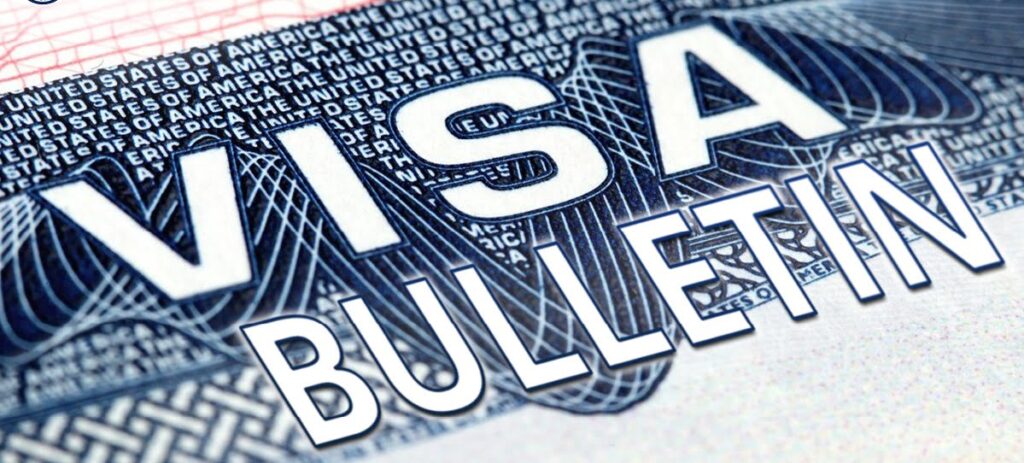The Visa Bulletin is a crucial tool for immigrants, their families, and legal professionals navigating the U.S. immigration system. Published monthly by the U.S. Department of State, the Visa Bulletin provides updates on the availability of immigrant visas, helping applicants understand when they might expect to receive their visas based on their category and country of origin. This detailed article will explore the history, structure, and significance of the Visa Bulletin, as well as practical tips for reading and interpreting it.
History and Purpose of the Visa Bulletin
Historical Background
The concept of the Visa Bulletin emerged as a response to the growing complexities of U.S. immigration law. Prior to the Immigration and Nationality Act (INA) of 1952, U.S. immigration was governed by a patchwork of laws that often favored certain nationalities and restricted others. The INA, also known as the McCarran-Walter Act, sought to create a more uniform system, but it still left many issues unresolved, particularly regarding the distribution of visas among various categories and countries.
The Immigration and Nationality Act of 1965, also known as the Hart-Celler Act, fundamentally changed U.S. immigration policy by eliminating national origin quotas and establishing a preference system based on family reunification and skills. This led to the introduction of numerical limits on visas, necessitating a system to manage these limits and inform applicants about their status. Thus, the Visa Bulletin was created.
Purpose
The primary purpose of the Visa Bulletin is to inform prospective immigrants about the current status of visa availability. It helps manage expectations and provides transparency in the immigration process. The Bulletin lists cut-off dates for different visa categories and countries, indicating when applicants who filed their petitions can expect to proceed with their cases.
Structure of the Visa Bulletin
The Visa Bulletin is divided into several sections, each addressing different aspects of visa availability. Understanding these sections is key to interpreting the Bulletin accurately.
Family-Sponsored Preferences
This section deals with visas for family members of U.S. citizens and lawful permanent residents (LPRs). The family-sponsored preferences are categorized as follows:
- F1: Unmarried sons and daughters of U.S. citizens.
- F2A: Spouses and children of LPRs.
- F2B: Unmarried sons and daughters (21 years of age or older) of LPRs.
- F3: Married sons and daughters of U.S. citizens.
- F4: Brothers and sisters of adult U.S. citizens.
Employment-Based Preferences
This section addresses visas for immigrants coming to the U.S. for employment purposes. The employment-based preferences include:
- EB-1: Priority workers, including persons of extraordinary ability, outstanding professors and researchers, and multinational executives and managers.
- EB-2: Members of the professions holding advanced degrees or persons of exceptional ability.
- EB-3: Skilled workers, professionals, and other workers.
- EB-4: Certain special immigrants, including religious workers and employees of U.S. foreign service posts.
- EB-5: Immigrant investors who invest a substantial amount in a new commercial enterprise that creates jobs.
Diversity Visa Program
The Diversity Visa (DV) program, also known as the green card lottery, aims to diversify the immigrant population in the United States by selecting applicants from countries with low rates of immigration to the U.S. The Bulletin provides updates on the number of visas available and the cut-off numbers for this program.
Charts and Tables
The Visa Bulletin includes various charts and tables that provide detailed information about visa availability:
- Final Action Dates: This chart shows the dates when visas are expected to be available for applicants whose priority dates are earlier than the cut-off date listed. If your priority date is before the cut-off date, you can proceed with your application.
- Dates for Filing: This chart indicates when applicants can submit their final paperwork, often earlier than the final action dates, allowing for more time to gather and submit required documents.
How to Read the Visa Bulletin
Reading the Visa Bulletin requires a basic understanding of its terminology and structure. Here’s a step-by-step guide:
Step 1: Identify Your Preference Category
First, determine your visa preference category. Are you applying for a family-sponsored visa or an employment-based visa? Within these broad categories, find your specific preference (e.g., F1, EB-2).
Step 2: Determine Your Country of Chargeability
The country of chargeability is typically your country of birth. The Visa Bulletin lists cut-off dates for several countries separately due to high demand (e.g., China, India, Mexico, and the Philippines). Applicants from these countries often face longer wait times.
Step 3: Locate the Relevant Chart
Find the appropriate chart in the Bulletin. There are usually two main charts for each category: Final Action Dates and Dates for Filing. Determine which chart applies to your current situation.
Step 4: Find Your Priority Date
Your priority date is usually the date when your petition was filed. Compare your priority date to the cut-off dates listed in the Bulletin. If your priority date is earlier than the cut-off date, you may proceed with the next steps of your application.
Example
Suppose you are an Indian national applying under the EB-2 category with a priority date of January 15, 2014. You would look under the Employment-Based Preferences section for the Final Action Dates chart. If the cut-off date for EB-2 India is listed as December 1, 2013, you must wait until the Bulletin advances past January 15, 2014, to take further action.
Significance of the Visa Bulletin
Managing Expectations
The Visa Bulletin helps manage the expectations of visa applicants by providing a realistic timeline for their immigration process. Knowing where you stand in the queue can alleviate some of the anxiety associated with waiting for a visa.
Policy Insights
The Bulletin also offers insights into U.S. immigration policy. By tracking changes in cut-off dates and the number of visas available, one can infer trends and shifts in immigration priorities. For instance, a rapid advancement in cut-off dates might indicate an effort to clear backlogs in certain categories.
Legal and Procedural Guidance
For immigration attorneys and legal professionals, the Visa Bulletin is an essential resource. It helps them advise clients accurately and prepare applications in a timely manner. The Bulletin’s regular updates ensure that legal counsel is based on the most current information available.
Economic and Social Impact
The Visa Bulletin impacts the broader U.S. economy and society. Employment-based visas, for example, can influence the availability of skilled labor in various industries. Family-based visas affect family reunification and the social dynamics of immigrant communities.
Challenges and Criticisms
Backlogs and Delays
One of the primary criticisms of the Visa Bulletin is the significant backlog in certain categories, particularly for applicants from countries with high demand like India and China. These backlogs can result in wait times of several years, or even decades, causing frustration and uncertainty for applicants.
Complexity and Accessibility
The Visa Bulletin can be complex and difficult to understand, especially for individuals without legal assistance. The technical language and detailed charts can be daunting, making it challenging for the average person to interpret their status accurately.
Limited Flexibility
The fixed nature of the numerical limits imposed by immigration laws means that the Visa Bulletin cannot easily adapt to changing circumstances, such as sudden increases in demand for certain types of visas or global events that impact immigration patterns.
Practical Tips for Visa Applicants
Stay Informed
Regularly check the Visa Bulletin to stay updated on the status of your application. The Bulletin is usually released around the 15th of each month, and keeping track of any changes can help you prepare for the next steps.
Consult Legal Experts
Given the complexity of the Visa Bulletin, consulting with an immigration attorney or legal expert can provide valuable guidance. They can help interpret the Bulletin and advise on the best course of action based on your specific circumstances.
Prepare Documentation in Advance
Even if your priority date has not yet become current, it’s wise to prepare all necessary documentation in advance. This includes gathering required forms, supporting documents, and evidence needed for your visa application. Being prepared can expedite the process once your priority date is current.
Understand Your Options
Explore all potential immigration options. For instance, if you are facing a long wait in a particular category, there might be alternative visas or immigration pathways available to you. Consulting with a legal expert can help identify these options.
Future of the Visa Bulletin
Legislative Changes
The future of the Visa Bulletin is closely tied to potential legislative changes in U.S. immigration policy. Proposals for immigration reform often include measures to address visa backlogs and streamline the process, which could significantly impact how the Bulletin functions.
Technological Improvements
Advancements in technology could also improve the Visa Bulletin’s accessibility and usability. Enhanced online tools and resources could make it easier for applicants to understand their status and navigate the immigration process.
Increased Transparency
There is ongoing advocacy for greater transparency in the visa allocation process. This includes clearer explanations of how cut-off dates are determined and more detailed reporting on the factors influencing visa availability. Increased transparency could help build trust and confidence in the system.
Global Trends
Global trends, such as economic shifts and international migration patterns, will continue to influence the demand for U.S. visas. Monitoring these trends and adjusting the Visa Bulletin accordingly will be crucial for maintaining an effective and responsive immigration system.
Conclusion
The Visa Bulletin is a vital component of the U.S. immigration system, providing essential information on visa availability and helping applicants navigate the often complex process. Understanding the history, structure, and significance of the Bulletin can empower immigrants and their families, offering clarity and guidance in their journey towards obtaining a U.S. visa. Despite its challenges and criticisms, the Visa Bulletin remains an indispensable tool, and ongoing efforts to improve its accessibility and transparency will benefit countless individuals seeking to build a new life in the United States.







